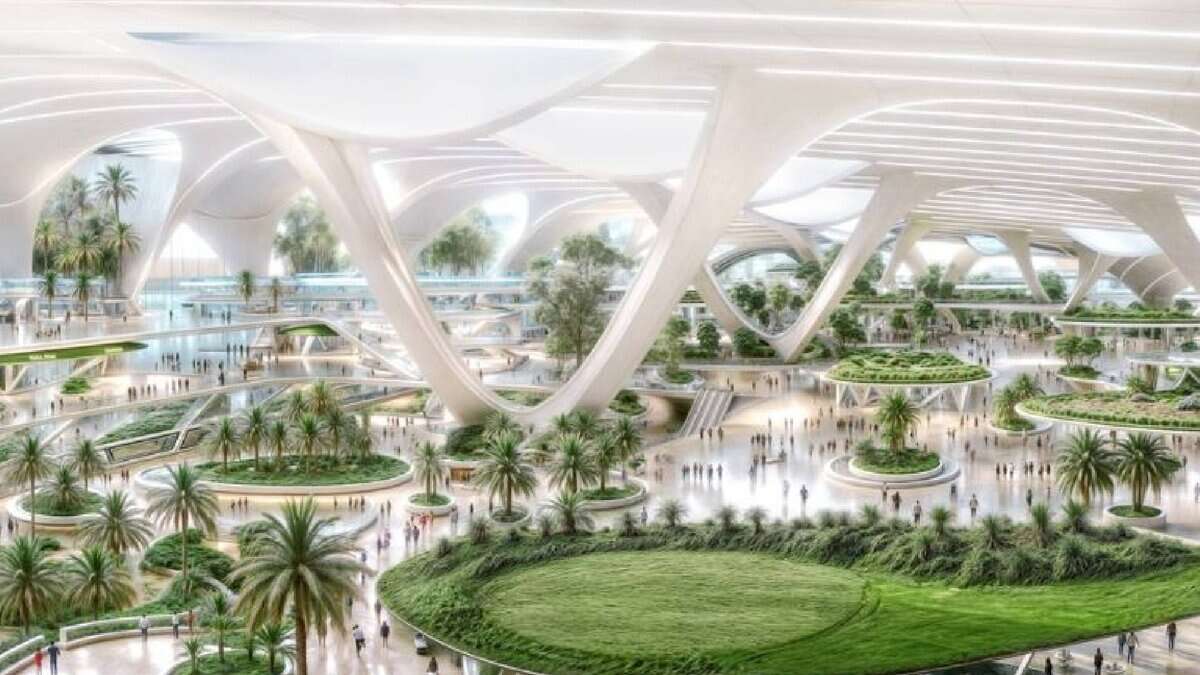
The first phase of Dubai’s new Al Maktoum International Airport (AMIA) is scheduled for completion by 2032. Once operational, the new mega-hub will gradually take over all flight operations from Dubai International Airport (DXB), currently one of the world’s busiest aviation hubs.
The announcement was made on Thursday, May 8, during Airport Show 2025 at the Dubai World Trade Centre by Khalifa Al Zaffin, Executive Chairman of Dubai Aviation City Corporation. He confirmed that construction is progressing as planned, with contractors already mobilised.
A major milestone in the development includes the awarding of a Dirhams 1 billion contract for the construction of a second runway, aimed at enhancing the airport’s long-term capacity and operational efficiency.
Upon completion of the first phase, AMIA will have the capacity to handle up to 150 million passengers annually, positioning it among the largest and most advanced airports globally. This phase encompasses the construction of a passenger terminal and four concourses, the Emirates News Agency (WAM) reported.
Al Zaffin highlighted the strategic location of the airport near Jebel Ali Port and the Free Zone, which supports the integrated multimodal logistics ecosystem of Dubai South. The broader development is expected to provide residential and employment opportunities for around one million people.
The project is also anticipated to significantly boost the local economy by generating thousands of jobs and stimulating growth in key sectors including real estate, tourism, hospitality, air freight, and global supply chains.
Spanning 70 square kilometres, the airport will feature over 400 aircraft gates, an automated transport system, and state-of-the-art technologies such as artificial intelligence, robotics, and biometric identification. Sustainability is central to the project, with a target of achieving LEED Gold certification.
Regarding the transition from DXB, Al Zaffin stated that the shift will occur in a phased and synchronised manner to ensure uninterrupted operations. An executive transition programme is currently underway in coordination with all relevant stakeholders.
Once fully completed, Al Maktoum International Airport is expected to accommodate up to 260 million passengers and 12 million tonnes of cargo annually.
Speaking at the Arabian Travel Market (ATM) on April 30, Dubai Airports CEO Paul Griffiths revealed that by 2050, the airport will include an underground train system to enhance passenger movement across the vast complex—reflecting Dubai’s vision to develop the world’s most futuristic airport.
In April 2024, Sheikh Mohammed bin Rashid Al Maktoum, Vice President and Prime Minister of the UAE and Ruler of Dubai, approved the designs for the new passenger terminals at Al Maktoum International Airport.
The development forms part of Dubai’s long-term strategy to reshape global aviation and expand its infrastructure to meet future travel demands.



